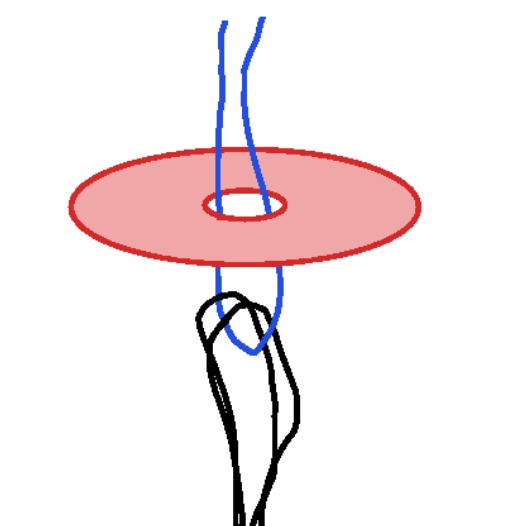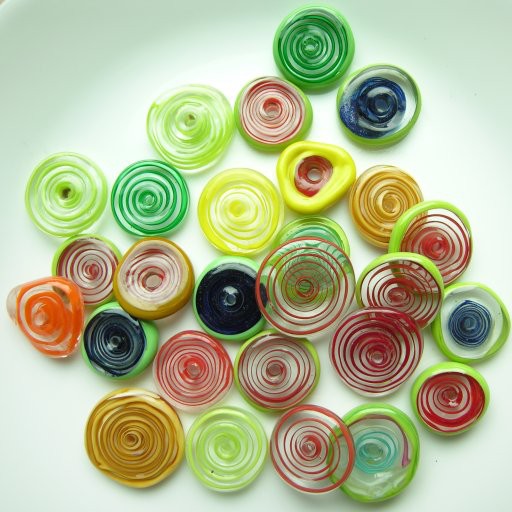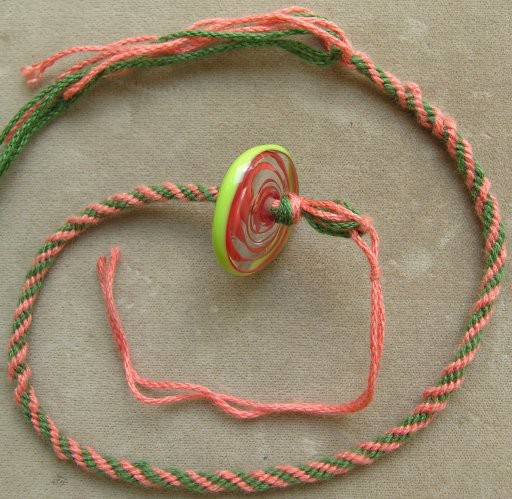Back when we lived in Detroit, there was no money for art teachers; nor much for gym; a pool was unheard of for elementary aged children; were we lucky, they attended music class once a week, from a teacher shared amongst several schools. This from the very same elementary school my aunt (who oddly enough has the same birthday as f2tE) attended some five or six decades ago, when it was part of one of the finest public school systems in the country!
The beautiful brick building, two stories with glorious ceilings and an expanse of windows that date it to an era when people relied upon sunshine to light their interiors, still echoes some of that quality in its gracious lines, though the new windows the principal spent years fighting for are ugly, with fake muntins that divide the expanses of glass in halves rather than thirds. Last time we drove through the neighborhood the only playground equipment available to the poor black children who attend that school (I think I can say this without irony, as my own offspring made up 25% of its white attendance)—a slide still high enough to offer decent entertainment, and monkey-bars in a half-dymaxion style, had been yanked out, no doubt as “too old-fashioned and dangerous”, though of course nothing took their place.
Despite (considerably) fewer resources, I never felt the teachers or either of the principals who presided during my kids’ sojourn were any less hardworking or dedicated, though the absenteeism and (sometimes) appalling home conditions of some of the students must have been very frustrating. (I mean, toilet paper could not be left in the stalls, because inevitably some kid would strew it all over the floor or plug the toilet with it; toilet paper was passed out, a strip at a time, to each child at the beginning of toilet breaks. Moreover, some of those children had the most saddening scars on their faces: and having had offspring who routinely managed to fall down flights of concrete stairs and break their bones falling off quite decorously small playsets, I say that children do not acquire scars like that without adult intervention: in the ordinary course of things, they simply heal too smoothly. Mondays were never a good day, as so many of the children would be so sleepy, sometimes, that they simply put their heads down on their desks.)
I was not and am not a PTA parent; I participate in the local educational system in that I vote in school board elections, attend parent-teacher conferences and assemblies, and occasionally even help out at some function or other (face painting at the end-of-year carnival being the most popular, both for me and the kids); and, once in awhile, attempt to share what I know with my children's classes. These commitments have ranged from an hour or so once a year to semester long efforts to teach drawing and (the fates help me and the poor kids) MEAP test-taking skills.
I suspect the most popular presentation was the Viet Nam one, because I was able to plan for it, and bring back candy and other souvenirs, besides dressing up in an exotic outfit (ao dai and conical hat, which of course wouldn't be worn together, since one is a tool to keep off the sun while working the fields, and the other fancy dress); but of the arty things I've shared, kumi has gone over the best, cuz the kids get to try it themselves. (Lampworking would be perfect, but the part that makes it so appealing to kids—the danger of fire and possibility of explosions—is precisely the reason I can't teach it.)
Back in the dark ages, before all these cute kiddie-craft sites popped up, I'd show braids and books, demonstrate a braid on my wooden marudai, then let the children have a few turns on one of two cardboard marudais. f2tY was adept enough to actually assist classmates, and the kids were—I thought—very patient about waiting their turn for three-four sequences of a simple 4-strand braid.
After we moved, and the kids got to do projects in a real art class, I didn't feel nearly as pressured to share my knowledge—if nothing else, team-teaching the MEAP practice taught me just how dismal I am at teaching kids (though it astounded me that neither they nor their teacher appeared to have any concept of ‘gaming the test’—something I'd figured out intuitively by third or fourth grade and endless experiences with the California Achievement Tests and the like that provided so much entertainment during my childhood school years. Nowadays, I understand that ambitious parents hire tutors to confer this skill. In any event, if I didn't understand perfectly why teachers resent devoting so much time to shepherding kids through these tests, I certainly did after that semester, though I did my best to impart logic and critical thinking skills—nearly totally absent, so far as I could tell—into the mix.)
However, after hearing about these experiences, one of my kids’ teachers wanted a kumi demo for f2tY's class, and seeing as the elder's had lucked out with the Vietnam presentation, I felt it only fair to provide f2tY's one about another Asian craft they could try themselves. (Kumi is actually practiced all over the world, but marudai, as well as the term itself, are Japanese.) A little research revealed what I thought was a much better approach—slotted pieces of cardboard, one per child: instead of two cardboard marudais shared out amongst 25–30 kids, each child could make hir own braid. And for extra benefit, we could even make the cards in class, meaning a) neither I nor the teacher would have to do it and b) if any of the kids was really entranced, they might be able to replicate the equipment.
This is the oldest class to whom I've taught kumi, and so it was a little easier (though frankly, I suspect it could be taught to pre-schoolers, with patience) —their greater age was of particular assistance in making the slotted cards. I myself tend to prefer technique rather than project classes, but I've learned over the years that most people like to take some sort of finished object (or at least the potential for one) home; and even I like to see galleries of stuff showcasing the given technique. So rather than just making a braid, I thought I'd present the material as a project.
—I used to give marbles that I made myself out of scrap as rewards to kids who did particularly well during the meap testing (and, come to think of it, I haven't made marbles since then) as I was absolutely appalled by the modern approach of rewarding kids’ behavior with candy and other food (besides which I figured I could practice as the kids wouldn't mind my various imperfections). Quite apart from associating it with dog-training, I don't think any approach that disassociates food from hunger can be good. So too here I wanted to provide a little extra-special something, or langniappe.
The pattern I used to teach the kids requires a button or bead stopper, so in lieu of exotic vietnamese snacks, I thought I'd make the beads, as a similar sort of premium. I wanted the braid to be short, so it would be more manageable (e.g. so the threads wouldn't tangle) and so the project came together as a bracelet. I owe Kristin Perkins big time for this one—she makes gorgeous disk beads, with concentric rings of various opaque and transparent colors that reveal a real genius for playful color. She's also recently come up with a simple chain bracelet with one disk bead. I've always thought it would be cool to make disk beads with spiral designs; and thought a friendship bracelet with a single focal bead on one end (around which the other could be tied) would be nice. And the kids wouldn't mind (too much, I hoped) that the beads would be imperfect.
But it meant I had to make the disk beads on fairly large mandrels: the hole had to be large enough to pass 8 strands of fingering weight yarn, but small enough that a knot wouldn't slip through it. The beads are roughly an inch (2.5cm) in diameter, so this was a bigger scale than I typically work, but even so I thought the beads, for practice pieces, came out okay.
As with any class, there were the kids who inevitably didn't get it, but most of ’em did great, and few who took to it like ducks to water—I'm thinking particularly of one blonde boy, who really just excelled with technique.
In fact, the program was so popular it spilled over to the next day, and much to my surprise, a significant proportion of the kids enjoyed taking turns on a “real” (cardboard) marudai as they did making individual braids. (Part of it may be the approach—the card method has its braid a kongo style, that moves continuously in one direction, whereas teaching on a real marudai lends itself more to the symmetrical back-and-forth movement tabby-weave-type braids...I did a survey after everyone had tried both methods, and all the kids expressed a definite preference for one or the other. Given the distribution of their answers, maybe 70/30, having a cardboard marudai with film-canister tama on hand to try once they're on their way with the card might be a nice touch for the ambitious—that 30% comes from kids having to share out their time on one marudai.)
A couple of notes for the pedagogically inclined: this can be a very inexpensive project—I spent a dollar apiece to buy the 2 skeins of yarn (on clearance), cut the slotted cards (4”/10cm on a side) from scrap cardboard, and originally devised a stopper from a toothpick. It's easier for the kids to braid on round slotted cards, but owing to time constraints we cut them square: this just meant we had to reassure the kids that their yarns would “jump the corners” periodically.

Using a threader (blue—cut this 4–6”/10–15cm long) works to pull the (black) warps (e.g yarns to braid) through either single hole beads or the hole in the cards themselves. Or both:)
Any kind of stick longer than the hole is wide will do as a stopper, if you don't feel up to making beads or haven't a jar of large garage sale buttons lying about. The instructions tell you to make the hole (roughly) an inch (2.5cm) in diameter, but this isn't necessary. Using a doubled thread as a leader, you can thread the yarn through a hole 1/4 that size. Not only it easier to ‘stop’ a small hole, it is easier to make a small hole: I just punched the cardboard with pointed scissors and rotated. (This step we had to do for the kids, as their scissors are all rounded point.) In fact, if you have scissors and rulers to pass out, you can incorporate measuring (e.g. distance between slots) and geometry (using diagonals to locate the center of your card).
The upshot of this long and extremely meandering post is that kids of all ages and backgrounds enjoy crafts, and with the new online resources, it's easy and fun to teach them. I highly recommend this gateway site, which has several tutorials.
file created 10aug06
Unless otherwise noted, text, image and objects depicted therein copyright 1996--present sylvus tarn.
Sylvus Tarn
